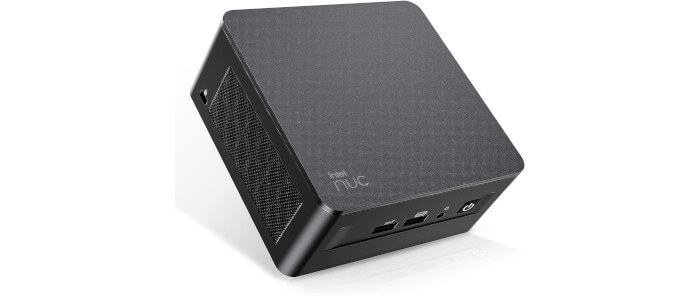This is a multi-part blog focusing on the Intel NUC 13 Pro Mini PC running Linux. In this series, we examine every aspect of this Mini PC in detail from a Linux perspective. We’ll compare the machine with modern desktop PC counterparts along the way.
This machine is from GEEKOM, a leading and respected brand and manufacturer of Mini PCs. They provide a 3 year warranty on their Mini PCs.
This article focuses on the two different cores present in the Intel NUC 13 Pro. They are Performance-cores (P-Cores) and Efficient-Cores (E-Cores).
Intel Thread Detector
The NUC 13 Pro’s processor integrates two types of cores into a single die: P-Cores and flexible E-Cores. Both types of core have a different role.
Performance-cores are:
- Physically larger, high-performance cores designed for heavy-duty work while maintaining efficiency.
- Run at high turbo frequencies and high IPC (instructions per cycle).
- Ideal for crunching through the heavy single-threaded work demanded by many game engines.
- Capable of hyper-threading, which means running two software threads at once.
Efficient-cores are:
- Physically smaller, with multiple E-Cores fitting into the physical space of one P-Core.
- Designed to maximize CPU efficiency, measured as performance-per-watt.
- Ideal for scalable, multi-threaded performance. They work together with P-Cores to accelerate core-hungry tasks.
- Optimized to run background tasks efficiently. Smaller tasks can be offloaded to E-Cores.
- Capable of running a single software thread (no hyper-threading support).
Intel Thread Director makes optimal scheduling decisions for any workload when assigning threads to P-Cores and E-Cores. Essentially, it’s a series of performance counters for each core in a system that report to the operating system how efficiently each thread is running.
Support for Intel Thread Director was first added to Windows 11. For Linux, support starting being added from Linux kernel 5.18, with patches added to later versions of the kernel.
Next page: Page 2 – Interpret output from top
Pages in this article:
Page 1 – P-Cores and E-Cores
Page 2 – Interpret output from top
Page 3 – How much faster is a P-Core compared to an E-Core?
Page 4 – Forcing programs to run on the P-Cores or E-Cores
Complete list of articles in this series:
| Intel NUC 13 Pro Mini PC | |
|---|---|
| Part 1 | Introduction to the series with interrogation of system |
| Part 2 | Benchmarking the Mini PC |
| Part 3 | Installing Ubuntu 23.10 Desktop |
| Part 4 | Configuring Ubuntu 23.10 Desktop |
| Part 5 | Power Consumption |
| Part 6 | P-Cores and E-Cores |
| Part 7 | Gaming |
| Part 8 | Installing and Configuring Manjaro |
| Part 9 | BIOS options |
